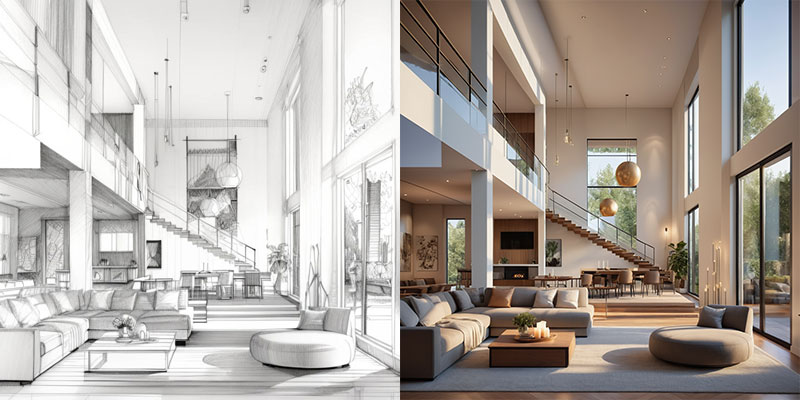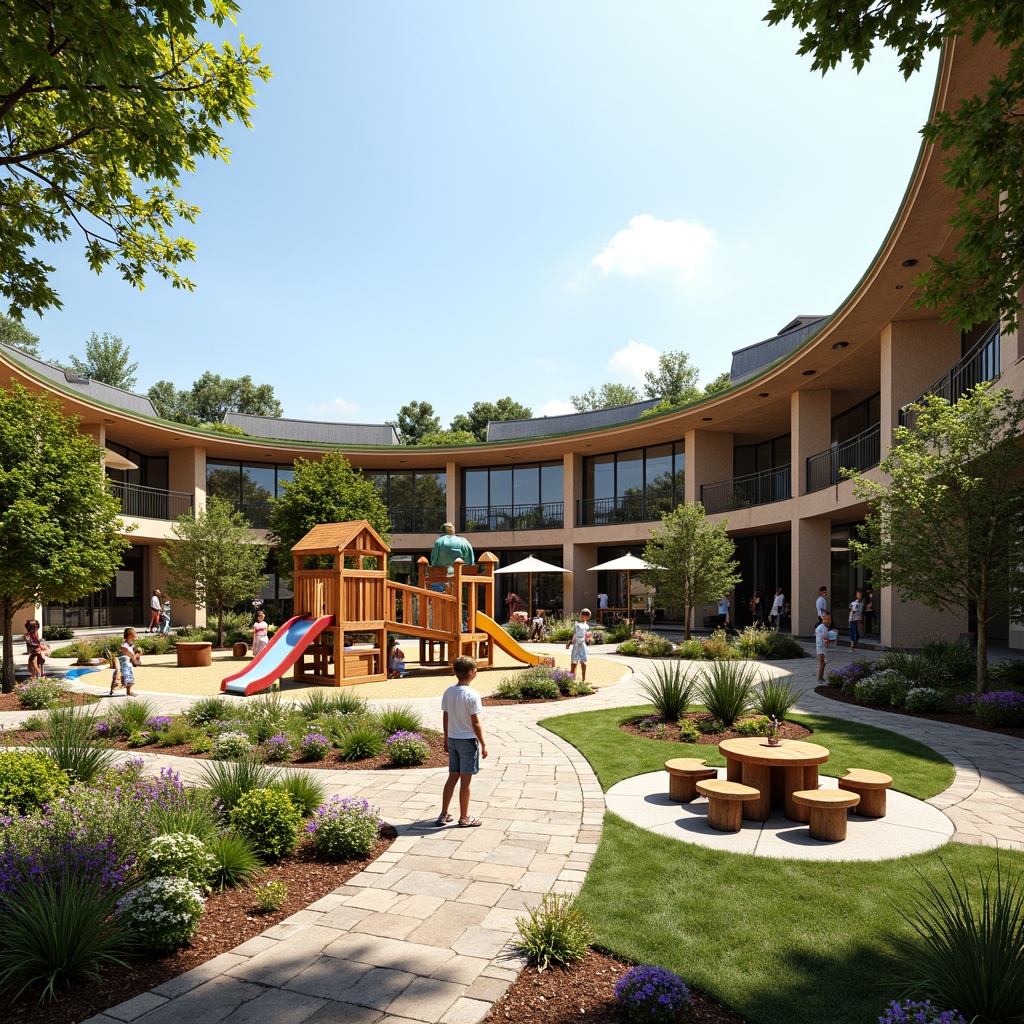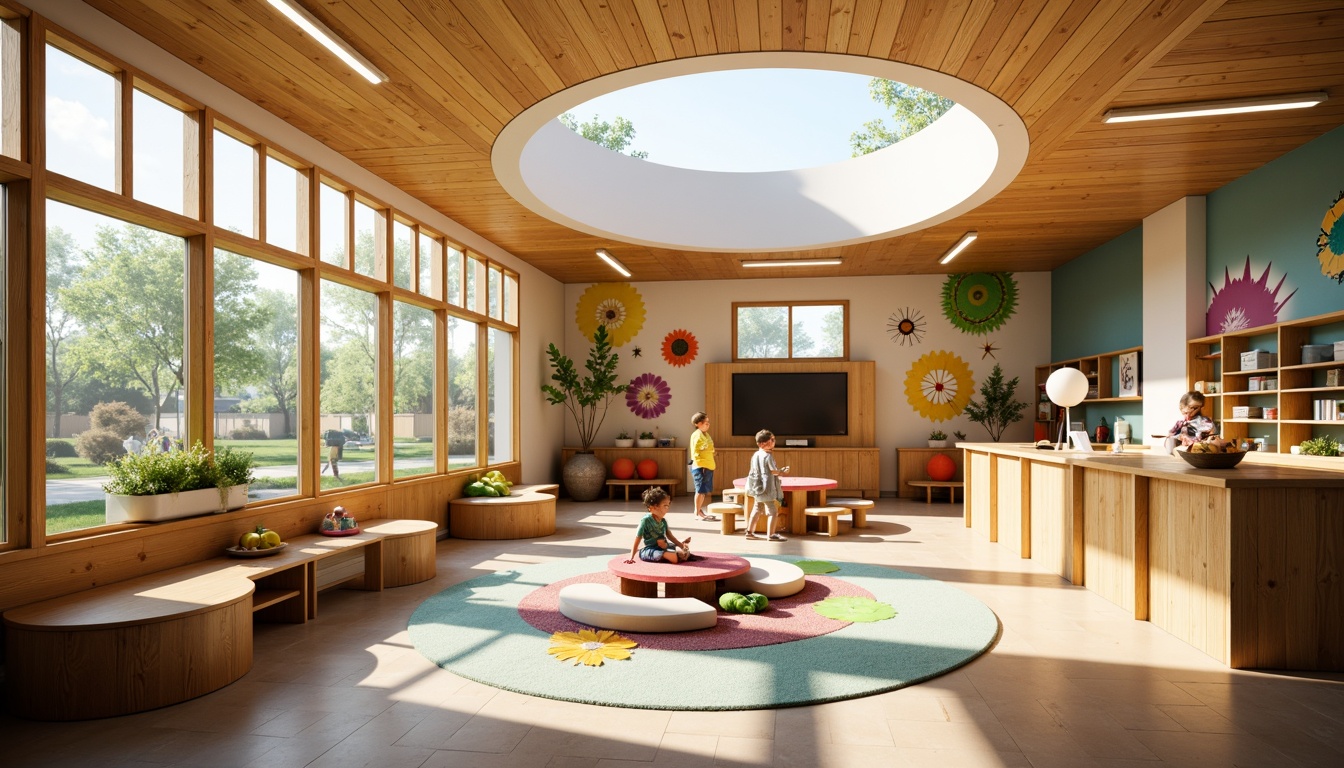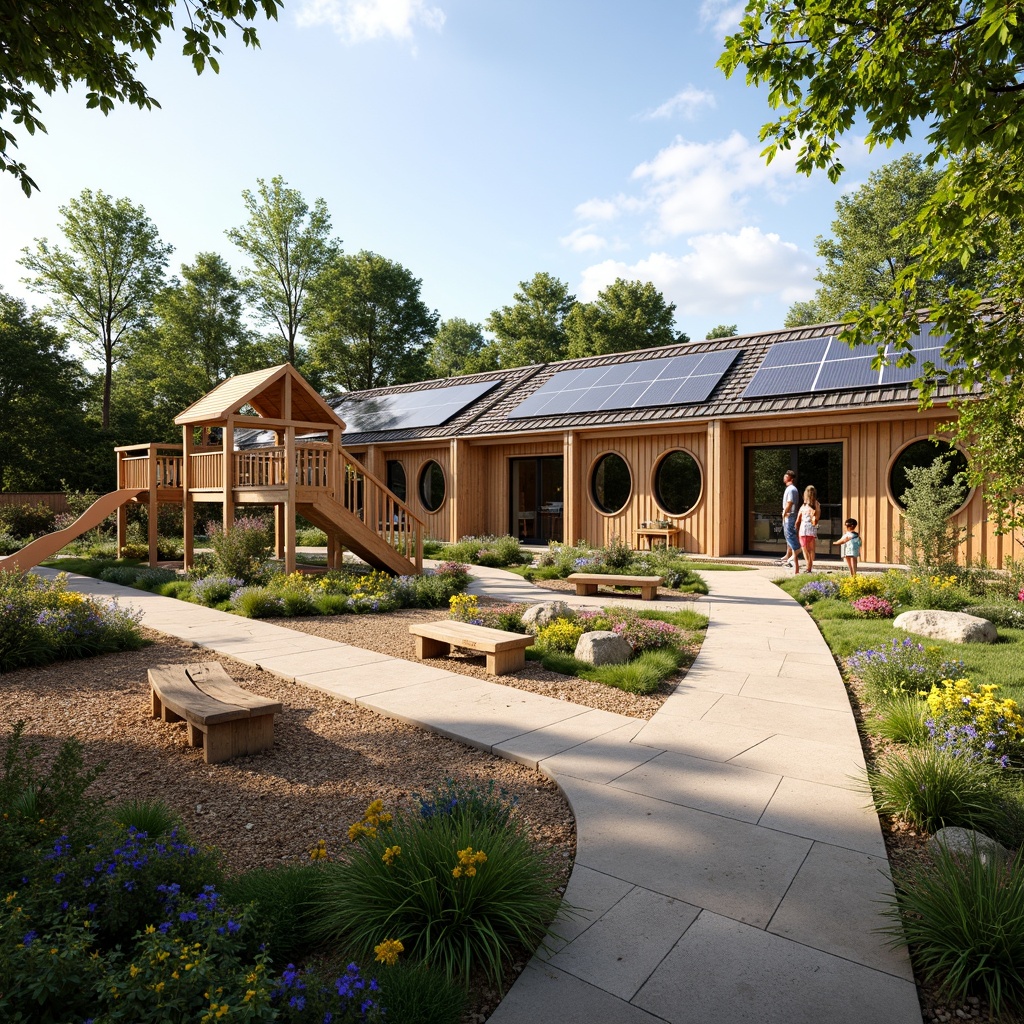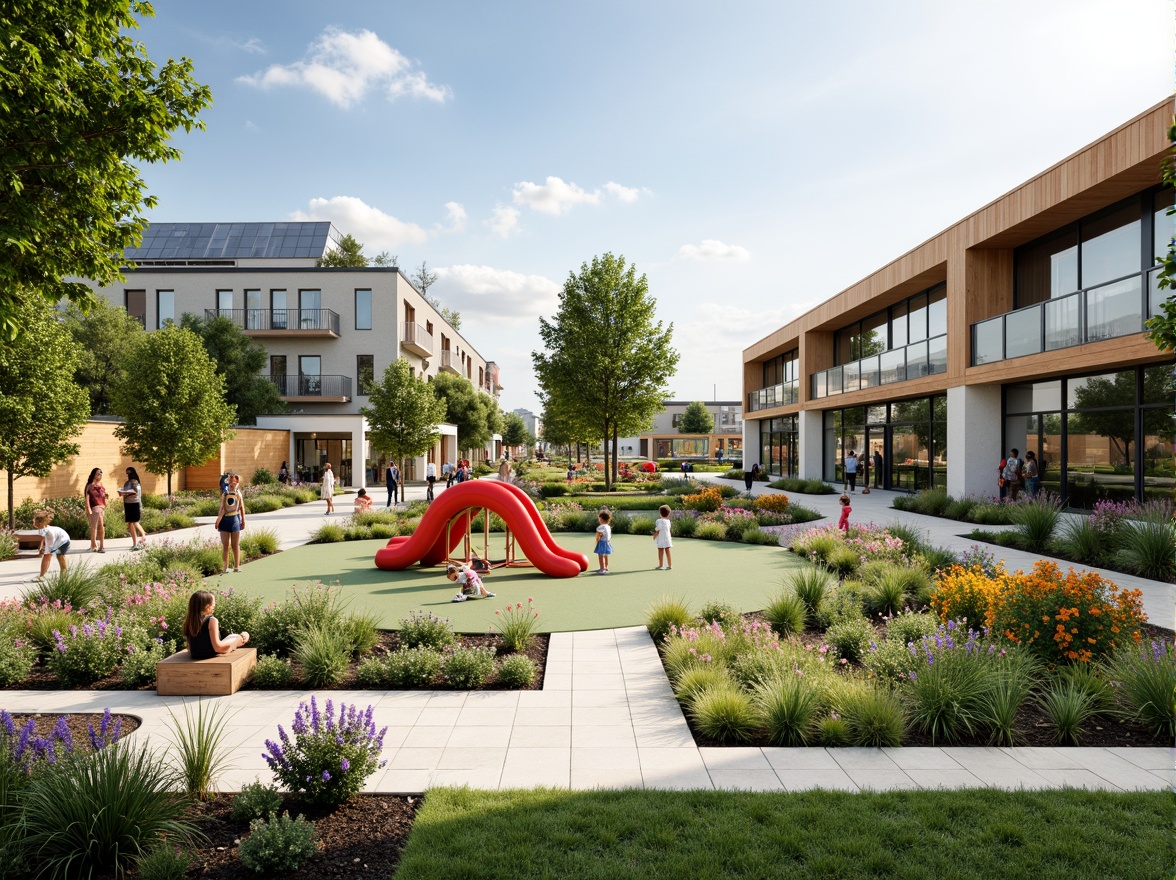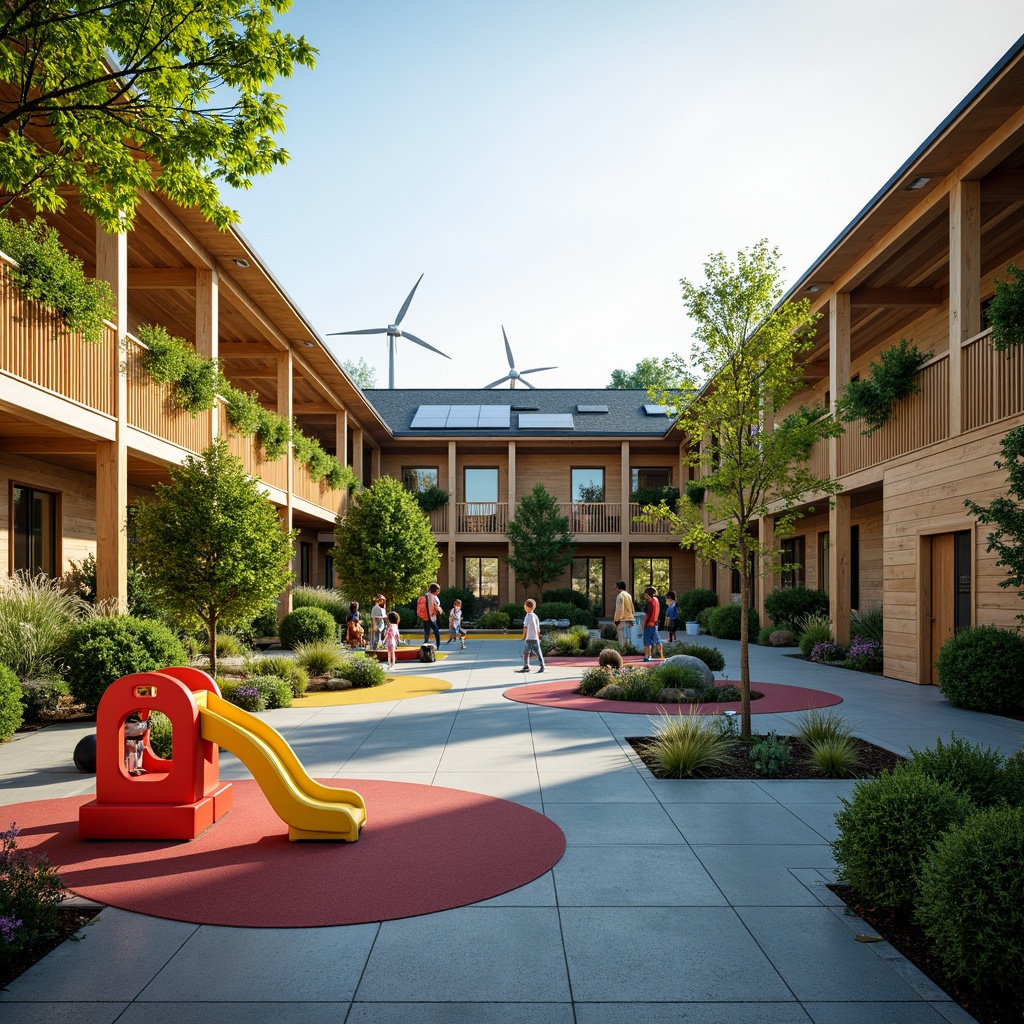Invite Friends and Get Free Coins for Both
Design ideas
/
Architecture
/
Kindergarten
/
Kindergarten Constructivism Style Architecture Design Ideas
Kindergarten Constructivism Style Architecture Design Ideas
The Kindergarten Constructivism style is a unique architectural approach that emphasizes functionality and creativity, particularly in educational environments. This style often incorporates perforated metal materials and coffee colors, creating a warm yet modern aesthetic. In this collection, we present 50 innovative design ideas that showcase how this style can be effectively applied in park settings, enhancing both play areas and learning environments. Explore these ideas to inspire your next architectural project.
Innovative Facade Design in Kindergarten Constructivism
Facade design plays a crucial role in the overall aesthetic and functionality of kindergarten buildings. In the Kindergarten Constructivism style, facades often feature dynamic shapes and textures, utilizing perforated metal materials to create visual interest while allowing for natural ventilation. This approach not only enhances the building's appearance but also contributes to a playful and engaging environment for children.
Prompt: Vibrant kindergarten building, constructivist architecture, bold colorful blocks, irregular shapes, playful patterns, whimsical murals, interactive installations, soft rounded edges, textured concrete walls, wooden accents, transparent glass facades, natural light filtering, dynamic shadows, 3D geometric forms, abstract sculptures, educational signage, child-friendly furniture, artificial turf grounds, blooming flower beds, sunny afternoon, warm gentle lighting, shallow depth of field, 1/1 composition, realistic textures, ambient occlusion.
Prompt: Vibrant kindergarten building, constructivist architecture, playful colorful facade, irregular shapes, bold geometric patterns, bright primary colors, textured concrete walls, wooden accents, oversized windows, natural light, flexible learning spaces, collaborative play areas, sensory stimulation zones, whimsical murals, interactive exhibits, tactile materials, soft pastel hues, warm atmospheric lighting, shallow depth of field, 1/2 composition, symmetrical framing, realistic textures, ambient occlusion.
Creating Engaging Play Areas with Constructivism
Play areas are essential in kindergarten design, and the Kindergarten Constructivism style excels in creating spaces that encourage exploration and creativity. By integrating natural elements and innovative structures, these play areas become extensions of the learning environment. The use of sustainable materials ensures that these spaces are safe and environmentally friendly, promoting a healthy lifestyle for young children.
Maximizing Natural Lighting in Kindergarten Design
Natural lighting is a vital aspect of kindergarten architecture, influencing both the mood and learning capabilities of children. In the Kindergarten Constructivism style, large windows and strategically placed openings allow ample sunlight to flood the interior spaces. This not only reduces the need for artificial lighting but also creates a warm and inviting atmosphere that enhances the overall educational experience.
Prompt: Vibrant kindergarten interior, playful color scheme, natural wood accents, large windows, clerestory windows, skylights, translucent roofs, soft warm lighting, minimal artificial lighting, open floor plan, circular reading nooks, cozy corners, educational display walls, interactive play areas, child-sized furniture, rounded edges, non-toxic materials, organic shapes, whimsical murals, nature-inspired artwork, lively patterns, textured rugs, ambient occlusion, 1/2 composition, shallow depth of field.
Prompt: Vibrant kindergarten playground, colorful murals, whimsical sculptures, educational signage, wooden benches, green roofs, skylights, clerestory windows, transparent glass doors, open floor plans, minimal partitions, soft pastel colors, warm beige tones, natural wood accents, abundant plants, morning sunlight, gentle diffused lighting, shallow depth of field, 1/1 composition, realistic textures, ambient occlusion.
Outdoor Integration in Kindergarten Architecture
Outdoor integration is a hallmark of the Kindergarten Constructivism style, blurring the lines between indoor and outdoor learning environments. By designing spaces that seamlessly connect with parks and natural surroundings, children can engage with nature while learning. This approach fosters a sense of curiosity and exploration, essential for early childhood development.
Prompt: Vibrant kindergarten playground, colorful murals, nature-inspired sculptures, climbing walls, rope ladders, wooden bridges, sensory gardens, butterfly-friendly flowers, fragrant herb planters, educational signage, interactive water features, musical instruments, outdoor classrooms, natural stone seating, wooden benches, shade structures, solar-powered lighting, rainwater harvesting systems, green roofs, recycled material playhouses, winding pathways, 1/1 composition, shallow depth of field, warm soft lighting, realistic textures.
Prompt: Vibrant kindergarten playground, natural wood climbing frames, colorful slides, sandbox areas, educational gardens, butterfly-shaped flower beds, meandering stone pathways, wooden benches, outdoor learning spaces, green roofs, living walls, solar panels, rainwater harvesting systems, eco-friendly materials, modern curved architecture, large windows, sliding glass doors, blooming flowers, sunny day, soft warm lighting, shallow depth of field, 3/4 composition, panoramic view, realistic textures, ambient occlusion.
Prompt: Vibrant kindergarten playground, outdoor classrooms, nature-based learning spaces, wooden play structures, wavy slide, rope climbing frames, sensory gardens, butterfly habitats, educational signage, weathered wood benches, natural stone pathways, green roofs, solar panels, rainwater harvesting systems, eco-friendly materials, circular windows, sliding glass doors, blooming flower beds, sunny day, soft warm lighting, shallow depth of field, 3/4 composition, panoramic view, realistic textures, ambient occlusion.
Utilizing Sustainable Materials in Kindergarten Design
Sustainability is a key consideration in modern architecture, and the Kindergarten Constructivism style embraces this principle wholeheartedly. By using sustainable materials such as recycled metals and eco-friendly finishes, these designs not only minimize environmental impact but also teach children the importance of caring for their surroundings. This commitment to sustainability is reflected in every aspect of the design, from the structure to the landscaping.
Prompt: Vibrant kindergarten playground, eco-friendly rubber flooring, recycled plastic play structures, natural wood accents, living green walls, energy-efficient LED lighting, solar panels, wind turbines, water conservation systems, green roofs, organic gardening areas, educational signage, interactive sustainability displays, minimalist modern architecture, large windows, sliding glass doors, blooming flowers, sunny day, soft warm lighting, shallow depth of field, 3/4 composition, panoramic view, realistic textures, ambient occlusion.
Prompt: Vibrant kindergarten playground, eco-friendly rubber flooring, recycled plastic play equipment, natural wood accents, living green walls, energy-efficient solar panels, wind turbines, rainwater harvesting systems, organic gardens, composting stations, educational signage, colorful ceramic tiles, soft warm lighting, shallow depth of field, 3/4 composition, panoramic view, realistic textures, ambient occlusion.
Prompt: Vibrant kindergarten playground, recycled plastic play structures, FSC-certified wooden climbing frames, eco-friendly rubber flooring, natural fiber carpets, energy-efficient LED lighting, solar-powered water features, rainwater harvesting systems, green roofs with native plant species, organic gardening areas, educational signage about sustainability, repurposed shipping container classrooms, reclaimed wood accents, circular economy-inspired design, soft warm lighting, shallow depth of field, 3/4 composition, panoramic view, realistic textures, ambient occlusion.
Prompt: Vibrant kindergarten interior, eco-friendly materials, recycled wood accents, natural bamboo flooring, energy-efficient LED lighting, solar-powered educational tools, interactive whiteboards, colorful rug patterns, whimsical wall art, playful furniture designs, organic shape structures, abundant greenery, living walls, airy open spaces, minimalist decor, soft pastel colors, warm wooden textures, cozy reading nooks, collaborative learning areas, circular gathering spaces, nature-inspired color schemes, educational signage, kid-friendly fixtures, accessible storage solutions.
Conclusion
In summary, the Kindergarten Constructivism style offers a wealth of design possibilities that prioritize functionality, creativity, and sustainability. By focusing on elements such as innovative facade design, engaging play areas, natural lighting, outdoor integration, and the use of sustainable materials, architects can create inspiring environments that foster learning and growth in young children. This style is not only visually appealing but also serves as a model for future educational architecture.
Want to quickly try kindergarten design?
Let PromeAI help you quickly implement your designs!
Get Started For Free
Other related design ideas

Kindergarten Constructivism Style Architecture Design Ideas

Kindergarten Constructivism Style Architecture Design Ideas

Kindergarten Constructivism Style Architecture Design Ideas

Kindergarten Constructivism Style Architecture Design Ideas

Kindergarten Constructivism Style Architecture Design Ideas

Kindergarten Constructivism Style Architecture Design Ideas

